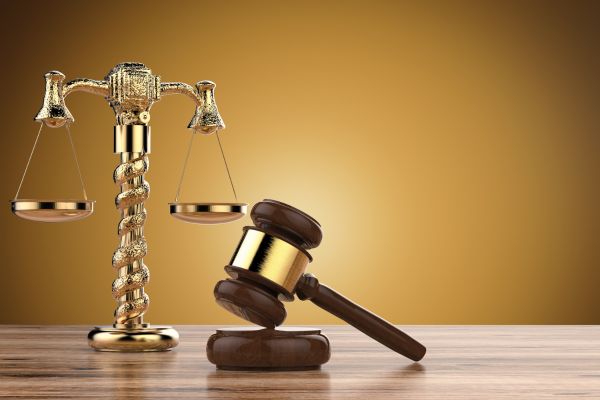Abstract
The rapid growth of digital technology has changed how people interact, trade, and govern. However, it has also led to new types of crime. Cybercrime, aided by the anonymity of the internet and fuelled by the rise of the dark web, has put pressure on traditional criminal law. Crimes like identity theft, ransomware attacks, illegal arms trade, drug distribution, and child exploitation are happening more frequently in areas that regular law enforcement can’t reach. This article looks closely at the shortcomings of traditional criminal laws in dealing with cybercrime. It also examines the dark web’s role in promoting international crimes and suggests legal, technological, and cooperative changes to tackle this growing issue.
Introduction
The digital age has changed the nature of crime. While traditional criminal law developed to deal with physical offenses, such as theft, assault, and homicide, today’s connected world faces a very different challenge: crimes that happen in a virtual space, committed by unseen individuals, often operating across borders.
The rise of cybercrime and the dark web reveals weaknesses in the foundations of criminal law. This law depends on geographic jurisdiction, known offenders, and physical evidence. The dark web, which people access using encryption and anonymity tools like Tor (The Onion Router), creates a safe space for criminal activities to grow without being monitored by law enforcement.
This shift requires more than just minor updates. It calls for a complete rethink of criminal law frameworks to keep up with the borderless, anonymous, and tech-driven nature of cybercrime.
Understanding Cybercrime and the Dark Web
Cybercrime Defined
Cybercrime includes crimes committed using computers, digital networks, or the internet. It ranges from cyber-dependent crimes, like hacking, ransomware, and denial-of-service attacks, to cyber-enabled crimes, such as fraud, trafficking, and terrorism.
The Dark Web
Unlike the surface web, which search engines index, and the deep web, which consists of private but legal databases like banking systems, the dark web is deliberately hidden. It contains marketplaces for:
- Illegal drugs and firearms
- Human trafficking networks
- Child sexual abuse material (CSAM)
- Cybercrime-as-a-service, including hacking tools and malware
- Cryptocurrency-based money laundering
The dark web flourishes due to three factors: anonymity, decentralization, and a global reach.
Challenges to Traditional Criminal Law
1. Jurisdictional Limitations
Criminal law is traditionally based on territory. However, cybercrimes cross borders. A hacker in Eastern Europe can target a victim in India, while servers operate in the U.S. This creates confusion about which jurisdiction has authority.
2. Attribution Difficulties
Traditional law assumes that offenders can be identified. In the digital world, offenders use VPNs, proxies, and encryption to hide their identities. This makes it nearly impossible to accurately attribute crimes.
3. Evidence Collection
Evidence in cyberspace is fragile and unstable. Traditional methods for preserving evidence do not work well when digital footprints can disappear with a single keystroke.
4. Outdated Statutory Provisions
Many criminal codes, including India’s Indian Penal Code from 1860, were written long before the digital age. Even with updates like the Information Technology Act from 2000, legal provisions often fall behind new threats, such as deepfakes, cryptocurrency laundering, and ransomware.
5. Proportionality of Punishment
Traditional sentencing models may not be enough. For example, a ransomware attack that cripples a hospital network can lead to deaths. Yet, penalties for cybercrimes are often less severe than those for physical offenses.
Case Studies and Global Incidents
- Silk Road (2013): One of the most notorious dark web marketplaces, Silk Road facilitated billions in illegal drug sales using Bitcoin. Its takedown revealed both the scale of dark web commerce and the challenges in policing it.
- WannaCry Ransomware Attack (2017): A global cyberattack infected over 200,000 computers across 150 countries, including critical systems in healthcare. It demonstrated the severe impact of digital crimes on the real world.
- Cambridge Analytica Scandal (2018): This scandal highlighted how personal data theft and misuse can weaken democratic processes, expanding the definition of crime into political and informational areas.
- Indian Context: ATM Malware Attacks (2018): Several banks in India reported losses from malware infections in ATMs. This situation illustrated the vulnerabilities in the country’s financial infrastructure.
Comparative Legal Approaches
- United States: The Computer Fraud and Abuse Act (1986) and the Patriot Act expand criminal liability to many cybercrimes, with federal agencies like the FBI leading enforcement.
- European Union: The Budapest Convention on Cybercrime (2001) is the first international treaty addressing cybercrimes. It emphasizes cooperation and harmonization among countries.
- India: The Information Technology Act, 2000, makes hacking, identity theft, and child pornography illegal. However, critics say it is outdated and reacts to problems rather than preventing them.
- China & Russia: These countries emphasize cyber sovereignty and often prioritize state control over internet access. This raises concerns about censorship and surveillance.
The Dark Web and Emerging Threats
- Cryptocurrency and Money Laundering
- Bitcoin and Monaro enable anonymous transactions. This makes financial tracing difficult.
- Ransomware-as-a-Service (RaaS)
- Dark web platforms rent out ransomware tools. This democratizes cybercrime.
- Terrorism and Extremism
- Extremist groups recruit, radicalize, and finance terrorism through encrypted platforms.
- Artificial Intelligence and Deepfakes
- The dark web is becoming a hub for AI-based tools that can be.
Rethinking Criminal Law in the Digital Age
1. From Territoriality to Transnationality
Cybercrime requires a shift from territorial jurisdiction to cross-border cooperation. We need to streamline Mutual Legal Assistance Treaties (MLATs) for faster evidence sharing.
2. Digital Evidence Frameworks
Legal systems must adopt clear standards for collecting, preserving, and accepting digital evidence. We could use blockchain technology to authenticate evidence chains.
3. Corporate Liability for Cybercrime
Corporations that manage sensitive data, such as banks and social media platforms, should be held criminally responsible for failing to protect user data.
4. Proactive Legislation
Instead of reacting to changes, criminal law should anticipate new threats like AI-drivencrimes, quantum cryptography, and offences related to the metaverse.
5. Restorative and Preventive Models
While retribution is important, criminal law should also include restorative justice, which supports victims of identity theft and ransomware attacks, as well as preventive models that require cybersecurity audits.
Reforms and Recommendations
- Ratification of International Conventions: Countries like India should ratify the Budapest Convention for better global cooperation.
- Specialized Cybercrime Courts: Create quick processes for handling complex digital cases.
- Public-Private Partnerships: Cooperation between governments and tech companies is essential for sharing intelligence.
- Whistleblower Protection: Strengthen legal protections for insiders who expose dark web activities.
- Capacity Building: Train law enforcement in forensic cyber-investigation and in using AI tools.
- Victim-Centric Approaches: Set up compensation programs for victims of cyber fraud and identity theft.
Conclusion
Cybercrime and the dark web form a new area in criminal law. Traditional frameworks based on territory, physical presence, and visibility are quickly becoming outdated. The anonymity, global reach, and complexity of the dark web require a shift in criminal law. This means moving from national silos to international cooperation, from punishing after the fact to preventing crime, and from relying on physical evidence to using digital proof systems.
As society becomes more dependent on technology, criminal law needs to change. It must transform into a flexible, tech-aware, and globally connected system. This system should not only punish offenders but also protect digital trust and security. The future of justice in the digital age relies on law keeping up with innovation. Crime in the shadows of the dark web is already ahead.
Author Name- Kashish Jain, BBA LLB HONOURS (Final year)






